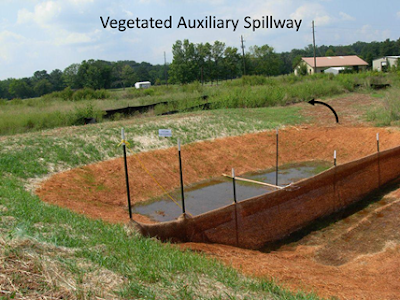Today’s Erosion and Sediment Control Tip: #9

Off-set and on-the-contour . If you install a silt fence sediment barrier, these are two terms you should understand. Research at the Auburn University - Erosion and Sediment Control Test Facility has found that the most effective silt fence trenching technique is an “off-set” installation. The posts and wire are placed 6 inches behind the geotextile trench or slice. By installing with this separation, less undermining occurs, and the trench is easier to backfill and compact. The Alabama DOT has transitioned to this installation technique and the next time the Blue Book is revised, it will recommend this too. No one likes to change, but this is a good change and will become commonplace soon. A silt fence must be placed mostly “on the contour” in order to pond runoff and cause sediment to settle from suspension. So what are silt fences that are not on a contour? Well, they are not a sediment barrier. Maybe a diversion or a work-lim...





